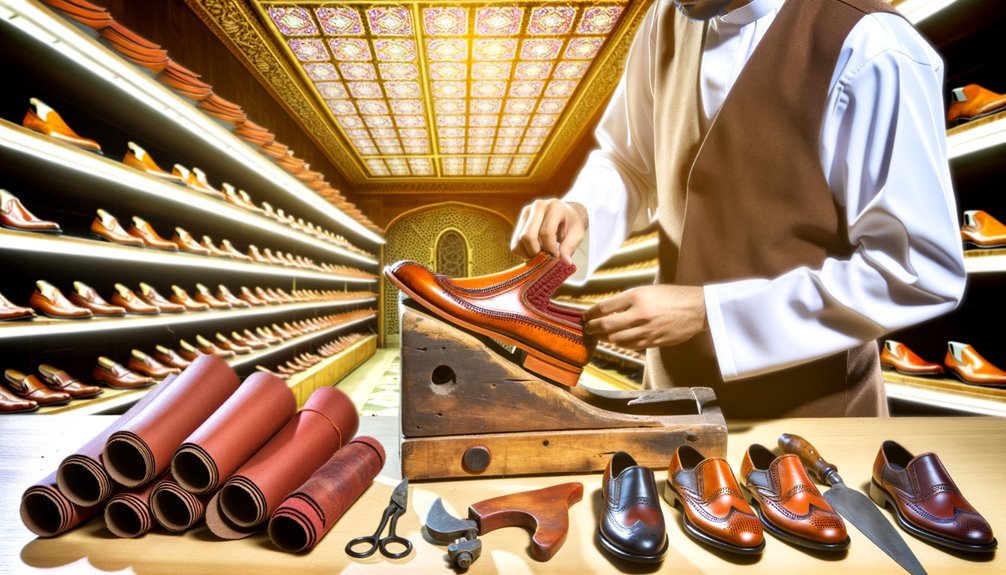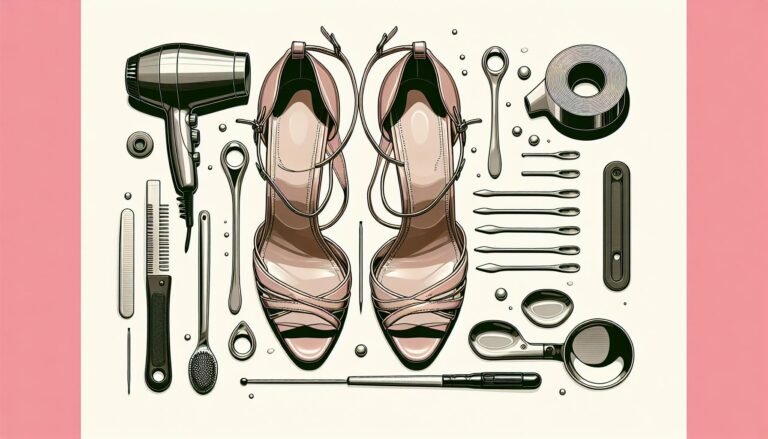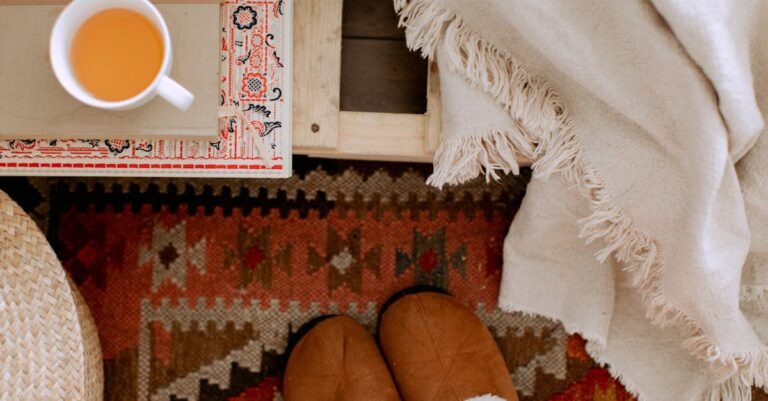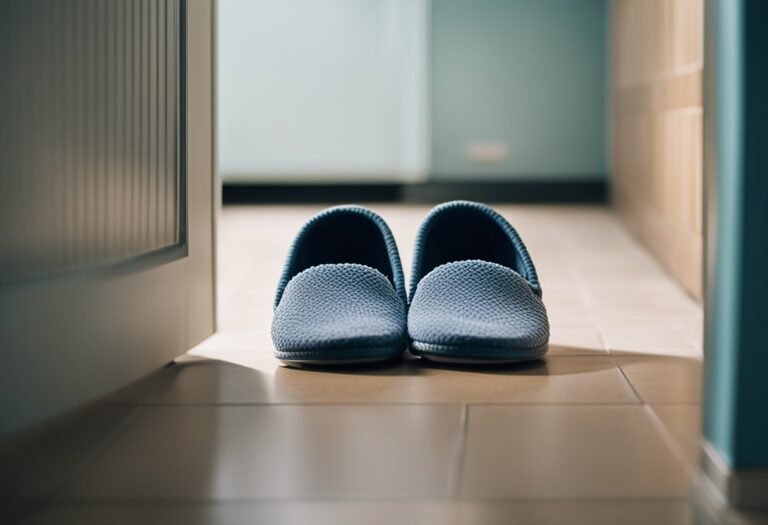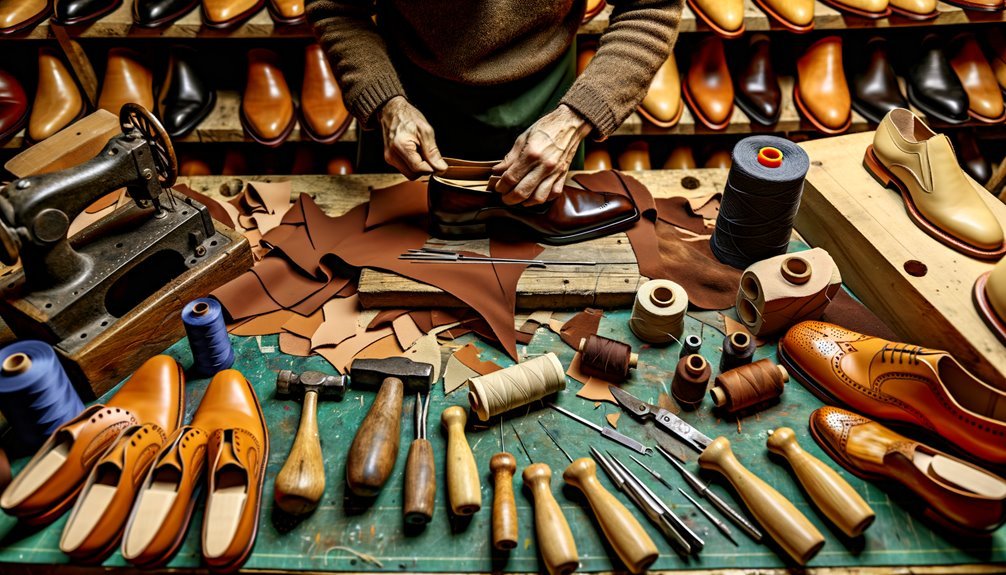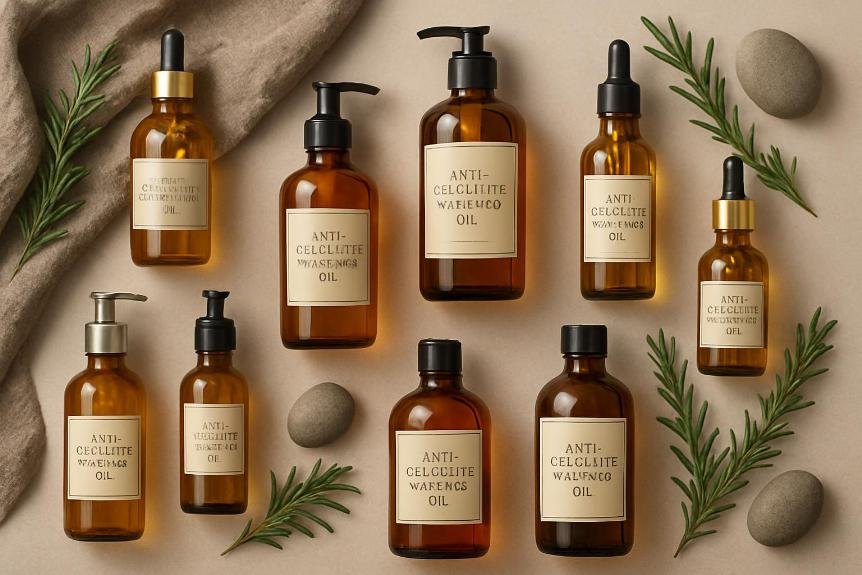3 Best Methods for Making Quality Shoes
When seeking quality footwear, consider the Goodyear welted, Blake stitch, and hand welted constructions. Each offers distinct benefits: Goodyear welted shoes provide robust durability and easy resoling; Blake stitch shoes are lightweight with flexible designs, perfect for summer; while hand welted options are crafted by skilled artisans, offering unmatched artistry and durability. These techniques reflect expert craftsmanship and provide a timeless style to your wardrobe. Explore further for in-depth insights on these methods.
Key Takeaways
- Goodyear welted construction offers durability, water resistance, and easy resoling, making it a benchmark for quality footwear.
- Blake stitch construction is known for its flexibility and lightweight design, ideal for stylish and efficient summer wear.
- Hand welted construction requires skilled artisans, resulting in shoes with superior craftsmanship and enhanced durability.
- All three methods—Goodyear, Blake, and Hand Welted—allow resoling, extending the lifespan of the footwear.
- Investing in these shoe construction techniques ensures long-term value and reflects the artistry and skill involved in shoemaking.
Goodyear Welted Construction

The Goodyear welted construction method, a technique perfected in 1869, remains a benchmark for crafting quality footwear. By sewing a leather strip, known as the Goodyear welt, around the shoe, you guarantee a robust bond between the upper and outsole. This intricate shoe construction involves precise stitching that mirrors the foot’s natural movement, enhancing both flexibility and durability. Anchored by a meticulously crafted shoe last, this method allows for easy outsole replacement, greatly extending your shoe’s lifespan.
Opt for Goodyear welted shoes if you value high quality and long-term wearability. Their durable leather construction offers superior water resistance, making them ideal for various weather conditions. While labor-intensive, their exemplary shoemaking techniques justify the investment in unparalleled craftsmanship.
Blake Stitch Construction
Having explored the robust durability of Goodyear welted construction, let’s turn to the sleek efficiency of Blake Stitch Construction. This method revolutionizes shoemaking with its single continuous stitch, elegantly binding the shoe’s upper directly to both the insole and outsole. Developed by Lyman Reed Blake, this technique is renowned for crafting lightweight, streamlined footwear, initially gracing men’s dress shoes before extending to diverse styles. The invention of the Blake stitching machine in 1856 marked a milestone, enhancing production efficiency. While its exposed stitching offers less resistance to water penetration, Blake-stitched shoes excel in flexibility and style. The method facilitates resoling, preserving the shoe’s structure, making it ideal for high-quality summer wear. Embrace this construction for a fashionable, enduring shoe.
Hand Welted Construction
When seeking the pinnacle of shoemaking craftsmanship, hand welted construction stands out as an exquisite choice. As a traditional shoemaking method, it requires skilled artisans to meticulously hand-stitch the upper and outsole to the insole. This labor-intensive process involves carving a rib directly into the leather of the insole. It enhances bond strength, ensuring a close fit between the welt and upper, resulting in a durable shoe with superior craftsmanship.
Using quality materials like Cordovan leather, hand welted shoes demand specific creams for maintenance, reflecting their high-quality nature. Their elegant silhouette is a reflection of traditional shoemaking artistry. Though they come at a higher price point, these shoes are truly works of art, showcasing the time and skill invested in their creation.
Frequently Asked Questions
How to Get Good Quality Shoes?
To get good quality shoes, consider shoe brands known for craftsmanship techniques and prioritize fit considerations. Evaluate comfort factors, style trends, and sole types. Explore custom options, sustainable practices, and price ranges while maintaining effective shoe care.
What Are Quality Shoes Best Made Of?
You’ll find quality shoes are best made from durable leather, but synthetic alternatives and breathable fabrics with waterproof materials can excel too. Focus on sustainable sourcing, advanced cushioning technologies, precise stitch quality, ethical production, and innovative sole construction for comfort.
How to Identify High Quality Shoes?
When identifying high-quality shoes, consider shoe construction techniques, stitching quality indicators, and sole durability factors. Evaluate fitting assessments guidelines, brand reputation, and price vs quality. Prioritize material sourcing ethics and craftsmanship expertise, and analyze customer reviews.
What Are the Top 5 Materials to Make Shoes?
You’d want to choose leather types for durability, synthetic fabrics for lightness, rubber soles for traction, eco-friendly materials for sustainability, and breathable mesh with waterproof coatings for comfort. Consider cushioning systems, heel height, design aesthetics, and color options.

